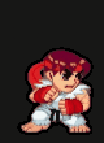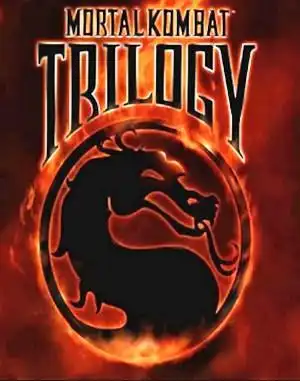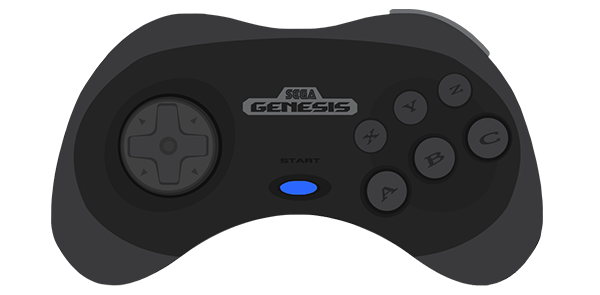Stepping back into the late 90s, the arcade scene was shifting, and home consoles were rapidly evolving. Midway, fresh off the massive success of Ultimate Mortal Kombat 3, was looking towards the future with Mortal Kombat 4 and its leap into 3D. But before fully committing to the new dimension, they released a game that aimed to be a grand finale for the 2D era: Mortal Kombat Trilogy.
Now, if you've searched for "Ultimate Mortal Kombat Trilogy," you're not alone. It's a common search term, likely born from the fame of Ultimate Mortal Kombat 3 and the desire for a truly definitive collection. However, the official game is simply Mortal Kombat Trilogy. This post will dive into that game, explore why it holds a complicated place in fans' hearts, and address that "Ultimate" confusion head-on.
What is Mortal Kombat Trilogy?
Released in 1996 for consoles like PlayStation, Nintendo 64, Sega Saturn, and PC, Mortal Kombat Trilogy wasn't a new arcade game. It was designed as a home-exclusive compilation, aiming to bring together characters, stages, and features from Mortal Kombat, Mortal Kombat II, Mortal Kombat 3, and Ultimate Mortal Kombat 3 into one massive package.
The idea was fantastic: a dream roster featuring nearly every fighter from the 2D era duking it out with all the finishing moves fans had come to love. It felt like a celebration of everything that had made Mortal Kombat an absolute phenomenon.
MKT vs. Ultimate Mortal Kombat 3: The Great Debate
This is where the waters get a little murky, and perhaps where the "Ultimate" search term comes from. Ultimate Mortal Kombat 3 (UMK3) is widely considered the pinnacle of the 2D series, especially its arcade version. It was fast, balanced (for MK standards!), and packed with content.
Mortal Kombat Trilogy, while ambitious, was often seen as a flawed follow-up. Why?
- Missing Content: Despite aiming to be comprehensive, MKT notably missed certain stages, character sprites (like classic MK1/MK2 versions of some fighters), and even specific moves or fatalities present in UMK3 or earlier games. This was often due to memory limitations on the target consoles.
- Different Feel: The gameplay engine in MKT felt subtly different from UMK3. Juggles worked differently, some moves had altered properties, and the overall pace could feel a bit off to seasoned UMK3 players.
- Lack of Arcade Release: Unlike every previous main MK title, MKT was never an arcade game. This meant no true "definitive" version existed, and each home port had its own unique quirks and compromises.
For many fans, especially those who spent countless hours on the UMK3 arcade machine, Mortal Kombat Trilogy felt like a step down, an incomplete tribute rather than the ultimate compilation they craved.
Unique Features of MKT
Despite its criticisms, Mortal Kombat Trilogy wasn't just a watered-down UMK3. It brought some unique elements to the table:
- Expanded Roster: It included boss characters like Goro, Kintaro, Motaro, and Shao Kahn as playable fighters (though often unbalanced).
- Animalities: Introduced in MK3, these finishing moves were present, allowing you to transform into an animal to finish your opponent.
- Brutalities: These long, complex combos resulting in an opponent exploding were also included.
- Aggressor Bar: A new meter that filled as characters fought, granting temporary speed and damage boosts when activated.
- Specific Stage Fatalities: Some stages from earlier games got updated Stage Fatalities.
These additions gave MKT its own distinct flavor, even if the core gameplay felt less refined than UMK3.
The Many Faces of Trilogy: Platform Differences
One of the most frustrating aspects of Mortal Kombat Trilogy was the significant variation between its home console releases:
- PlayStation (PS1): Generally considered one of the better versions. Had most content, decent performance, but still suffered from loading times and some missing elements compared to the UMK3 arcade.
- Nintendo 64 (N64): Limited by cartridge space. This version notably lacked certain character animations, removed Animalities and the Aggressor bar, and had fewer character voices. However, it uniquely featured a 3-on-3 endurance mode.
- Sega Saturn: A solid port, often compared favorably to the PS1 version, though it also had its own set of minor differences and loading issues.
- PC: Based on the PS1 version, playable via DOS. This version is often sought after today for digital distribution platforms, though getting it running smoothly can require tools like DOSBox.
These differences meant that experiencing "Mortal Kombat Trilogy" varied wildly depending on which console you owned.
Reliving the Trilogy Today
So, how can you play Mortal Kombat Trilogy now?
- Original Hardware: Dust off those old consoles! Finding copies can be hit or miss.
- Emulation: Emulators for PS1, N64, and Saturn allow you to play ROMs/ISOs if you own the original games.
- PC Version: The PC version, while not available on modern digital storefronts like GOG (which focuses on classic PC titles), can sometimes be found floating around online archives (Archive.org might have historical context or shareware versions, but be cautious with abandonware legality). Getting the DOS version running typically requires setting up DOSBox.
- Fan Projects: Due to the perceived shortcomings of the official MKT, dedicated fans have created unofficial patches, hacks, and even entirely new builds (often called "Ultimate Mortal Kombat Trilogy" or similar) that aim to combine the best of UMK3 and MKT, add missing content, and improve balance. These are unofficial and vary greatly in quality and legality.
While not the perfectly polished gem some hoped for, Mortal Kombat Trilogy remains a fascinating artifact of the fighting game boom and a unique, if flawed, attempt to consolidate the 2D Mortal Kombat legacy before the series went 3D. It's worth exploring for any die-hard MK fan or retro gaming enthusiast.
FAQ
Q: Is "Ultimate Mortal Kombat Trilogy" an official game? A: No, the official game is called Mortal Kombat Trilogy. The "Ultimate" part is likely a confusion with Ultimate Mortal Kombat 3 or refers to fan-made projects.
Q: How is Mortal Kombat Trilogy different from Ultimate Mortal Kombat 3? A: MKT is a later game that attempts to compile content from all previous 2D MK games, adding features like the Aggressor bar and playable bosses. UMK3 is a refined version of MK3, often considered more balanced and faster by competitive players. MKT also missed some content from UMK3.
Q: Which version of Mortal Kombat Trilogy is the best? A: The PlayStation and Sega Saturn versions are generally considered the most complete official ports, though they still have differences and limitations compared to the UMK3 arcade. The N64 version is significantly cut down due to cartridge size.
Q: Can I buy Mortal Kombat Trilogy on PC today? A: No, it is not currently available for digital purchase on platforms like GOG. You would need to find the original PC release and potentially use DOSBox to play it.


